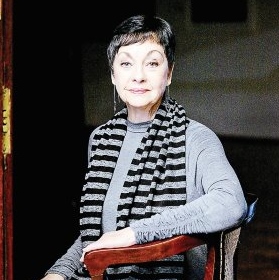
News

Jews part of SA National Gallery’s turbulent history
MOIRA SCHNEIDER
This titbit of information was shared by the gallery’s former director, Marilyn Martin, who gave some insights into her newly released book, Between Dreams and Realities – A History of the South African National Gallery, 1871-2017.
She highlighted the Jewish links with the gallery in conversation with Jon and Paul Weinberg, hosted by the South African Jewish Museum and the Jacob Gitlin Library last Wednesday. Jon worked with Martin and his brother Paul is an acclaimed photographer.
The book covers exhibitions and events without shying away from controversies, as well as focusing on the achievements of directors who often faced political agendas. “The book brought back a range of memories, some good, some tough,” Jon said, recalling “a difficult time as we headed towards transformation”.
Martin had to do a lot of navigation around political currents, which she did with courage and aplomb. “It’s a very well written book, but doesn’t always make for easy reading,” he said.
Martin tells how Hyman Liberman, the first Jewish mayor of Cape Town (1904 to 1907), left £10 000 (R181 000) for a “suitable and useful public memorial”, as he had no direct heirs.
The result was Liberman Doors, the memorial doorway, carved in Burmese teak by sculptor Herbert Vladimir Meyerowitz, “whose footprint is all over the gallery”. The main exhibition room was named after Liberman, and designated for the exclusive display of South African art.
The doorframes tell the story of the Jewish people, placing Jewish history in the context of Africa and the Cape, according to Martin.
Max Michaelis, born of German-Jewish parents, made a “huge gift” of Netherlandish art to the nation in 1910.
Irma Stern is present across the decades, with Arum Lilies having been acquired in 1951. By 1987, there were 20 paintings, 13 drawings, and 12 prints by the artist in the collection. In 2015, Carol Kaufmann and Andrea Lewis curated Brushing up on Stern from the permanent collection, and published a catalogue.
European Jewish artists Kottler, Lipshitz, and Kibel’s works, honoured in retrospective exhibitions at the gallery, were then acquired for the permanent collection.
“But there was another side to the story,” Martin said, mentioning reactionary Nazi sympathiser Edward Roworth, who ran the gallery from 1930 to 1948. “A bastion of intransigent artistic attitudes, he removed Kibel’s work from an exhibition.”
When Paris fell to Nazi Germany in 1940, Roworth claimed it was “OK. France was ripe for national downfall because the French had been responsible for the downfall of art”.
He was supported by “reactionary” art critic Bernard Lewis, a trustee of the gallery. In a notorious article, Lewis launched a tirade against “modern” painters, quoting from Hitler’s Nuremberg speech of 1 September 1933, praising his “wise words” on “degenerate art”.
He came under attack in the press by Kibel and others, and when between 1944 and 1947 Roworth embarked on a “selling spree” of pieces from the National Gallery, “they had to get rid of him”, Martin said.
Martin told how a David Goldblatt retrospective at the gallery was held in 1983, an overview of his first 35 years, opened by Nadine Gordimer.
William Kentridge, too, had had a “long association” with the gallery, Martin said, praising his generosity. In 2004, a piece of his art was auctioned in the United States for $10 000 (R148 000), which he gave to the gallery to purchase other artists’ work.
Jonathan Shapiro (Zapiro) and Gideon Mendel, activists through their art, have both held “remarkable” exhibitions at the gallery.
In the early 1990s, members of the community approached the gallery to engage in joint ventures, Martin recalled. “Elsie Menasce approached me to work with Cape Town’s Sephardi Hebrew Congregation on Sepharad ’92, commemorating the 500th anniversary of the expulsion of the Jews from Spain.”
Two years later, Myra Osrin, then-director of the Cape Town Holocaust Centre, asked the gallery to host the photo-documentary exhibition from Amsterdam, Anne Frank in the World. The gallery’s education department had, in fact, been “very involved” in writing the text, Jon said. “We created a link with what happened in South Africa during the apartheid period,” he said. “Martin opened up collaboration on Museum Mile, and Jewish-related projects were part of that.”
Paul said Martin’s book was important to understand art history in this country. “We’re living in a time when art’s been highly contested, burned, removed,” he said, alluding to incidents on the campus of the University of Cape Town in recent years. “Martin has brought us to a space to consider historical questions. The book takes on the history, and fills in a space of what could easily have been erasure and noise.”
Martin highlighted Neville Dubow’s contribution to art, architecture, and education. He served on the gallery’s board from 1972 to 1995, and had been chair of its acquisitions committee. She noted that his had been a “progressive voice” during the apartheid years.
She also paid tribute to artist Joe Wolpe, who founded the Friends of the National Gallery 51 years ago, and served on its council for 27 years.




